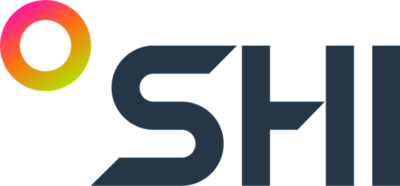Course Overview

Course objectives
What Will you Learn? This course will provide you with the skills and knowledge required to provide a professional level of support to business clients and help them succeed. As you progress through the course, you will develop a working understanding of the complete end-to-end accounting life cycle and be able to support clients with the key required tasks within QuickBooks Online Accountant.
Modules
Module 1: Setup and Maintenance
- Module 1 Notes
- Course Introduction
- Knowing Which Account is Right for You
- Getting Started
- User Setup
- Access Rights
- User Setup Completion
- Adding Employees to Payroll
- Inviting Your Accountant
- Dashboard and 3 Ways to Navigate QBO
- Commonly Used Forms
- Module 1 Summary
Module 2: List Management
- Module 2 Notes
- Defining Lists
- Importing Lists
- Employees vs 1099
- Adding and Removing Entries
- Updating Entries
- Editing and Managing List Elements Demo
- Merging Items (entries)
- Form Requirements
- Module 2 Summary
Module 3: Sales (Money-In)
- Module 3 Notes
- Product and Service Setup
- Customer Setup Demo
- Invoicing Workflows
- Recording Sales
- Customer Statements
- Tracking Audit History Demo
- Sales Reciept Workflow
- Undeposited Funds Account
- Accounts Receivable Impact
- Impact of Connecting Your Bank Account to QBO
- Billable Expense Invoicing
- Recording a Customer Credit
- Delayed Charges
- Estimates
- Module 3 Summary
Module 4: Purchased (Money-Out)
- Module 4 Notes
- Product and Service Setup on Purchase Forms
- Vendor Setup
- Purchase Order Transactions
- Entering and Paying Bills
- Recording Checks
- Recording Credit and Debit Card Transactions
- Recording EFTs, Online Payments, and Wire Transfers
- Recording Vendor Credits
- Voiding vs Deleting Checks
- Vendor Page and Report Insights
- Module 4 Summary
Module 5: Accounting
- Module 5 Notes
- Basic financial statements (Balance sheet, income statement, and statement of cash flows)
- Financial Statements Expanded
- Cash and Accrual Accounting Differences
- Difference Between Cash and Accrual Reporting
- Setting a Closing Date
- Balancing Your Books aka Reconciling Demo
- Journal Entries
- Audit Log Insights
- Project Profitability Demo
- Module 5 Summary
Module 6: Reports
- Module 6 Notes
- Customized Reports
- Commonly Used Reports Demo
- Setup Automatic Report Emails
- Collapse and Expand Report Function
- Exporting and Importing Reports
- Module 6 Summary
Module 7: Customizations and Time Savers
- Module 7 Notes
- Tracking Income and Expenses for Multiple Locations
- Organizing your Chart of Accounts
- Custom Fields on Invoices
- Recurring Transactions
- Customizing a Sales Form
- Keyboard Shortcuts
- QBO Mobile App Preview
- Connecting Third Party Apps to QBO
- Module 7 Summary
Module 8: Extra
- Module 8 Notes
- Common Mistakes QBO Users Make
- Final Note on Bookkeeping Best Practices
- Why QBO is Awesome
- Course Outro
- Defining Terms and Sample Quiz Questions
Modes of Learning
- Flashcards: Remember the “read and guess” games we used to play back then? Here’s to enhance what you learned. How does it work? A statement will be written on a flashcard, and you’ll need to guess the answer. Then flip it over to see if you answered it correctly. The cards continue, each with a random statement from the course that you took previously.
- Scatter: “Make Everything Disappear.” Turn the screen white and vanish it all but this time testing your knowledge and your time being monitored. Find the best match and click your way toward success. This brain teaser might give you a hard time! But education combined with games adds an element of fun to it.
- Learn: Here’s another. Read and choose the right answer. A game designed on a Multiple-Choice pattern. This kind of exercise boosts your confidence. When one option seems to be correct, you choose the other only for it to be the right option. The right option will welcome another statement, but don’t sweat! You are still learning.
- Speller: This fun-packed game is unique in its own way. Hear the term carefully and type it out on your screen. You think you are a pro at learning spellings of tricky terms. Test yourself out with this game. Could you hear it properly? If you could, were you able to write it?
We have found our students doing absolutely great by showcasing their certificates. Grab that certificate of yours before someone else does and get that recognition you deserve.
You best learn when you see it. Our easy-to-understand video content is in place for you. Watch the studying content and grasp all the concepts easily. With so many lectures and 3000+ hours of video content, find what suits your needs. These educational videos are designed to sharpen your experience with your training content. Our easy-to-understand video content is in place for you. Watch the studying content and grasp all the concepts easily.
In contrast to other e-learning services, our labs will let you exercise what you analyze in a real environment with a lot to choose from. This layout mirrors the traditional study room format which ensures you will recognize exactly the way to set up, manage and troubleshoot any environment.
Being a successful IT professional involves more than knowing key terms and concepts. You need to be able to “apply” your knowledge to real-world situations. At EZDA we quote, “Learn it to pertain to it.” So, why spend money buying the equipment when we got you all covered?

